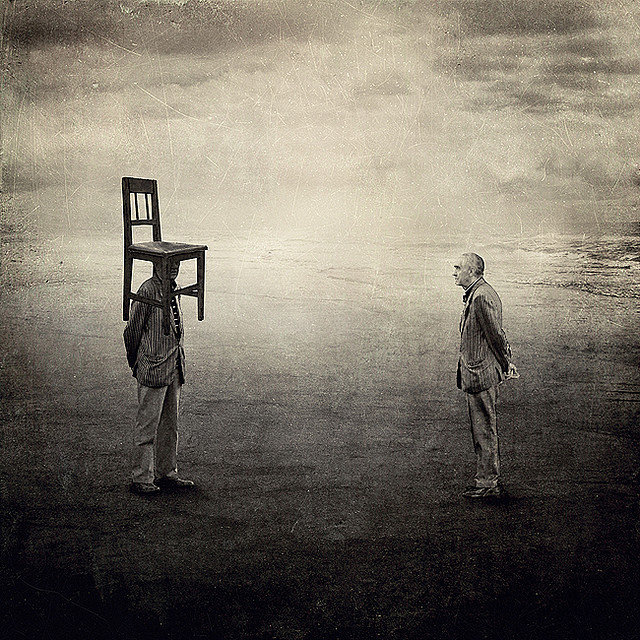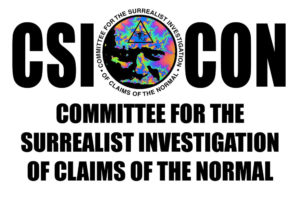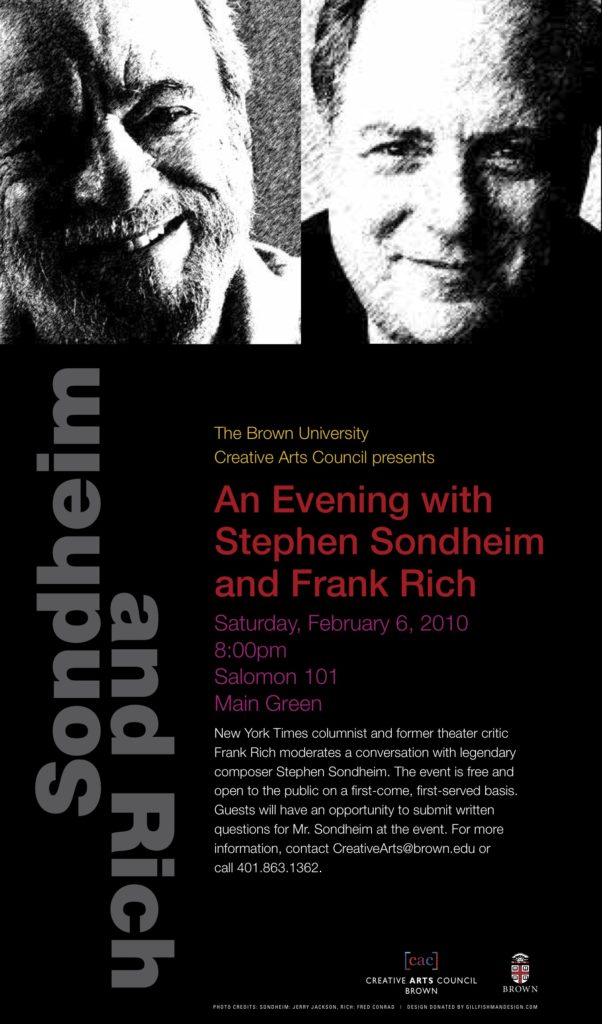via Surrealism Today
Blog
Committtee For the Surrealist Investigation for Claims of the Normal
Via Surrealism Today
“Confidence is 10% hard work and 90% delusion”
“Confidence is 10% hard work and 90% delusion”
– Tina Fey
An Evening with Stephen Sondheim Photographs
Big failures are dignified. Little failures are shameful.
— Stephen Sondheim
An Evening with Stephen Sondheim
An Onstage Conversation with Frank Rich
A Life in the Theatre
Saturday, November 14, 8pm, Sanders Theatre
Composer and lyricist Stephen Sondheim is the most important artist to work in American musical theater over the past half-century. Mr. Sondheim has agreed to accept a limited number of “rare” appearances with New York Times columnist and former chief theater critic Frank Rich.
During this live, unscripted conversation, Mr. Sondheim and Mr. Rich will reminisce about Stephen Sondheim’s career including his collaborations with Leonard Bernstein and Jerome Robbins; his predecessors, including his mentor Oscar Hammerstein II; the state of American musical theater; and, in a very personal series of reflections, his own creative process, speaking specifically on works ranging from his early shows Gypsyand West Side Storyto such later classics as Company, Folliesand Sweeney Todd.
At the close of his onstage conversation with Stephen Sondheim at Sanders Theater on November 14, Frank Rich will include questions submitted in advance by audience members and other Sondheim fans.
From NPR:
Kitsch and the Modern Predicament by Roger Scruton, City Journal Winter 1999
Kitsch and the Modern Predicament by Roger Scruton, City Journal Winter 1999:
Kitsch and the Modern Predicament
by Roger Scruton
In a celebrated 1939 article, “Avant-Garde and Kitsch,” published in Partisan Review, the New York art critic Clement Greenberg argued that figurative painting was dead. “The alternative to abstraction,” he wrote, “is not Michelangelo but kitsch.” Every attempt to make the painted image vie with the photograph, he believed, would lead to disaster, as clichés took charge of the canvas. Henceforth painting must provide its own subject matter: it must be self-sufficient, pure, uncontaminated by the figurative image. The future of painting lay with the “abstract expressionists,” as Greenberg described them: the artists who treated painting like music, as a medium for expressing emotion through the use of abstract forms. Greenberg was perhaps the most influential art critic of his day. His essay set the agenda for an emerging school of New York painters and also set the price tag on their works. Vast sums of public and private money have since changed hands to stock American houses and American museums with works that, to the ordinary eye, have nothing to recommend them apart from their attempt to be abreast of the times. The avant-garde ceased to be a realm of caution and experiment and became, under Greenberg’s tutelage, a mass industry. So long as you avoided the literal image, so long as you defied all figurative conventions, you, too, could be a modern painter. You, too, could establish your credentials as a pathbreaking artistic genius, by doing something—no matter what, so long as it left a permanent mark on a purchasable object—that no one had done before. And if you got lucky, you could be rich and famous, like Cy Twombly, on account of images that look like accidents—and might even be accidents, like the numbers that win on the lottery. Of course, some painters refused to take this path—painters like Edward Hopper, who worked to purify the figurative image and to see again with the innocent eye. But critics and curators remained skeptical; they had invested too heavily in the avant-garde to believe that it was, after all, only a fashion. Hopper’s success was therefore viewed as a freakish thing—a last-ditch survival of an art that elsewhere had been killed off by the march of history. For all truly modern people, the critics went on saying, Greenberg’s maxim still held good: don’t touch the figurative image, or you’ll land yourself in kitsch.











